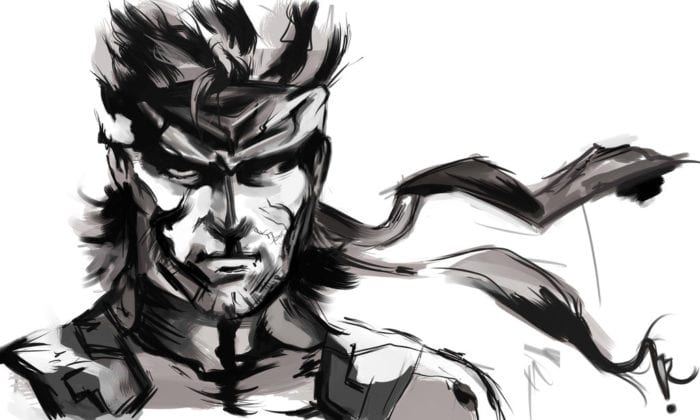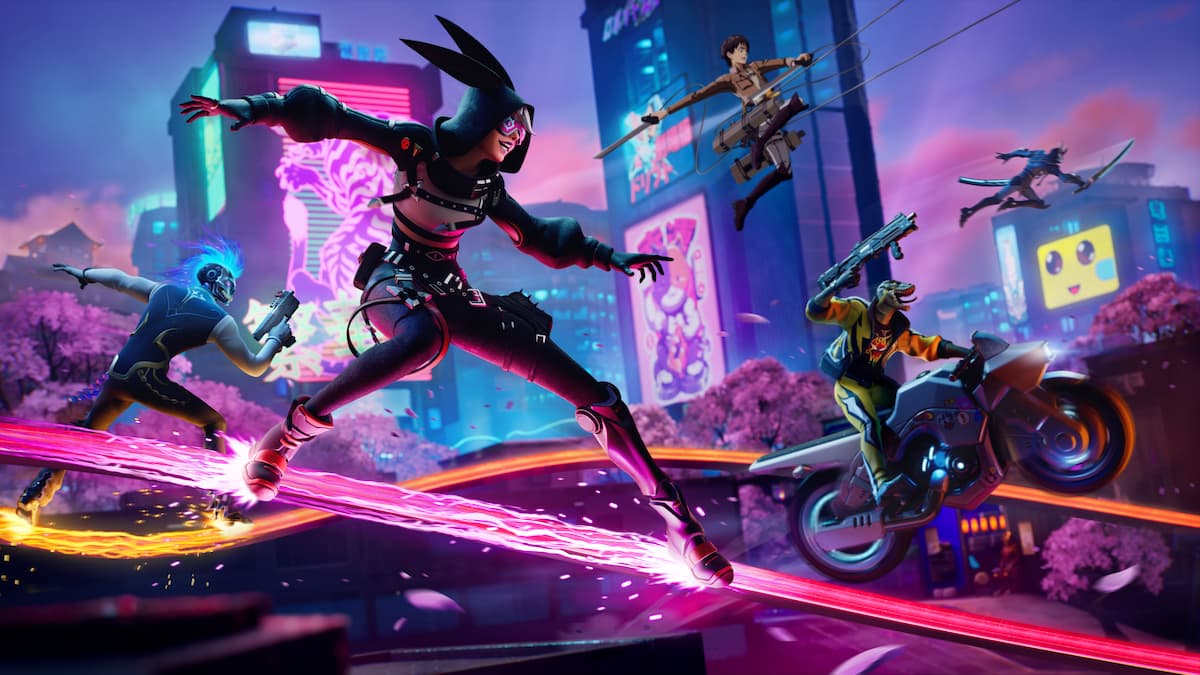Metal Gear – 1987

At once a bold new direction for game development and the coming out party for one of the medium’s top talents, Metal Gear changed everything. Hideo Kojima, confined to the limits of hardware, played the hand he was dealt to great effect. The MSX home computer couldn’t handle many objects on screen at once, so Kojima dispensed with flying bullets and centered on avoiding the action altogether – and thus, stealth gaming was born. Metal Gear introduced players to Solid Snake, as he embarked on a mission to infiltrate the military fortress of Outer Heaven and take down its mysterious leader. Players had their first run-in with Big Boss, as well, another of the series’ most iconic and important characters.
Metal Gear 2: Solid Snake – 1990

In terms of shaping and defining the series as it is now, Metal Gear 2: Solid Snake may well be the most important. Many of the mechanics and characters so familiar to us now were born here: the Soliton radar, Colonel Campbell, crouching and crawling, vision cones, and key cards – glorious key cards.
Legend has it that Kojima bumped into an ex-colleague on a train, and learned that a western sequel to Metal Gear was in development – he was irked by this. Kojima allegedly penned the entire plot and concept for Metal Gear 2: Solid Snake on that same train journey. In it, we once again join Solid Snake, as he is dispatched by Campbell to Zanzibar Land to investigate a disturbance. Big Boss makes a return as the compelling villain, and we see an early iteration of the troubled fan-favorite Frank Jaeger, AKA Grey Fox.
Metal Gear Solid – 1998

In 1998, Metal Gear Solid had a big impact on the video game landscape. A masterpiece of stealth, action, and storytelling, the first 3D entry in the series was the culmination of Hideo Kojima’s love of film, and his understanding of perfectly balanced stealth gameplay. A landmark of storytelling in games, Metal Gear Solid centered on Solid Snake once again, as he was pulled out of retirement to infiltrate the nuclear weapons disposal facility on Shadow Moses Island in Alaska.
The polygonal majesty of the PlayStation delivered us full 3D environments in sumptuous detail: footsteps in the snow, steam clouds billowing on people’s breath, and shell casings cascading to the floor. Snake’s mission brought him face to face with his twin brother Liquid Snake and, in doing so, touched on one of the series’ focal themes: cloning and identity. A party bag of tricks, Metal Gear Solid toyed with the medium by punching through the fourth wall: mission-critical information being on the game’s CD case was one thing, but the boss fight with Psycho Mantis will live on as one of gaming’s more devious and clever boss fights. The game had no equal at the time of its release, and in terms of tone, execution, and impact, it still doesn’t now.
Metal Gear Solid 2: Sons of Liberty – 2001

Hailed by some as the first truly post-modern video game, Metal Gear Solid 2: Sons of Liberty still stands as an excellent example of stealth gameplay delivered in a truly cinematic way. The famous bait-and-switch at the end of the game’s excellent tanker chapter caused outrage among some fans, who didn’t warm to the game’s actual protagonist Raiden. The game took place four years after the events of Metal Gear Solid, and tasked Raiden with the infiltration of Big Shell, an ocean decontamination facility, in order to put a spanner in the works of the game’s villains – a terrorist organization known as the Sons of Liberty.
Kojima tweaked the gameplay to allow shooting in first-person, a tactic which helped showcase the graphics of the PS2. It was an incredible game to look at, and it was an incredible game to play. Despite criticisms of its convoluted plot, fans of the series keep coming back for that very reason, and the game did well to develop characters old and new. Revolver Ocelot cemented his reputation as one of gaming’s best villains.
Metal Gear Solid 3: Snake Eater – 2004

A brilliant young operative with the codename Naked Snake drops into the Russian region of Tselinoyarsk to rescue a captured Soviet scientist wishing to defect to the west. The game puts players in the shoes of the series’ long-running antagonist in Big Boss (only he has yet to take on that moniker). Snake’s mission involved the killing of his former mentor The Boss, and the recovering of a massive cache of money left behind in the chaos of WWII.
For many, Metal Gear Solid 3: Snake Eater is the series’ finest iteration. It struck a near-perfect balance between the strengths of the series and a wealth of innovations: camouflage, hunting and eating for survival, a luscious jungle setting, and one the best theme tunes in gaming. After the post-modern and chaotic narrative in MGS2, Kojima moved with the times once again and gave that game’s detractors exactly what they wanted: a back-to-basics tactical espionage action game that went back to the series’ roots – literally.
Metal Gear Solid: Portable Ops – 2006

Naked Snake meets a young Roy Campbell and has his first taste of army-building. Along the way, players get an excellent slice of portable Metal Gear – something that was sorely missing up until that point. Metal Gear Acid is underrated, and a great game in its own right, but it isn’t quite Metal Gear and isn’t canon. Portable Ops had some incredible moving comic panel cut scenes drawn by Ashley Wood, which breathed character and life into the story, an approach which carried over into the next game.
Portable Ops was overshadowed by the success of Peace Walker, which is a shame because Snake’s exploits here are memorable and it is littered with unique and interesting characters: Python, Cunningham, Elisa, and a young Frank Jaeger drive an interesting plot around the last mission Snake undertakes for his old team, before he starts building a new one. First-person, full 3D environments, excellent radar mechanics, and no punches pulled make Portable Ops not only one of the best portable Metal Gear games, but one of the best portable games ever.
Metal Gear Solid 4: Guns of the Patriots – 2008

The last Metal Gear Solid game as we traditionally knew them, Metal Gear Solid 4: Guns of the Patriots took the series to new heights, and finished off the tales of Solid Snake, Big Boss, and The Patriots. Kojima wove a tale of private military companies, big business, intelligence organizations, and legacy into a gameplay formula that crystallized the series’ various elements. The OctoCamo allowed players to blend into their surroundings in a more streamlined way, a much need addition when the game put players somewhere they had never been before: the battlefield.
Solid Snake – or Old Snake as he is in MGS4 – is dealing with accelerated aging and is tasked with bringing down Ocelot as a personal favour to Colonel Campbell – one final mission. The game was a resounding success, pleasing fans and critics alike; it took the existing MGS formula as far as it could go, perfecting years of tinkering and innovation while delivering the most memorable conclusion of any game in the series. Though MGS3 allowed players a very wide range of tactics, MGS4 was the first game in the series that offered players the choice to go in all guns blazing. This was an option in previous games, but with the odds heavily stacked against the player, it was a very good way to get killed. In MGS4 skilled players can blast gracefully through, carving a path of destruction across the battlefield if they so choose. This duality of approach would catch soon.
Metal Gear Solid: Peace Walker – 2010

One of the series’ finest moments, Peace Walker brought us back to the jungle as Snake and his military outfit MSF (Militaires Sans Frontières) find themselves involved with a CIA conflict in Cuba. Peace Walker was an expanded and more developed Portable Ops. Giving players the same detailed squad-building mechanics as before, it allowed them to build Big Boss’ empire up themselves. Peace Walker dripped with dramatic irony as the villain we were becoming seemed more and more relatable.
Peace Walker introduced Paz, Chico, and a young Kaz Miller to the game’s plot, which saw more twists and turns, along with the invention of the first true bipedal Metal Gear itself in Metal Gear Zeke. All this vital backstory remained exclusive to PSP players until 2011, which saw its inclusion in the Metal Gear Solid HD collection. With Peace Walker, Kojima and his team explored the character of Big Boss, and detailed his reasons for splintering off in his own direction; it’s powerful stuff, and his relationship with The Boss is perhaps the most moving connection made in the series.
By the end of Peace Walker, you won’t know whose side you’re on anymore, but it won’t matter, because like the series itself, they change with the times.
Metal Gear Solid V: The Phantom Pain – 2015

His final MGS game, and his final game working under Konami, Kojima completed the transformation of one of the series’ best characters into one of its best villains. Metal Gear Solid V: The Phantom Pain brought Big Boss and his MSF outfit into the Soviet-Afghan war. Players assume the role of Big Boss (now accepting of the codename) as he evades the clutches of Cypher (The Patriots), while attempting to gain the upper hand through infiltration, desert warfare, and some of the best emergent stealth gameplay ever committed to disc.
Kojima eschewed the series’ trademark cinematics in place of cassette tapes (to be played on Big Boss’ Sony Walkman of course), an approach which both made the game more accessible for new players, and never pulled people out of the action. What action it was, too; the simple mechanics dovetailed elegantly with the games open-world design, and afforded players complete freedom of approach. There was some backlash to the bait-and-switch that Kojima pulled toward the end of MGSV, however, to get caught up in technicalities is to miss the point of the game. By the end, we are Big Boss; we witness his transformation. Outer Heaven is established, and the stage is set for Solid Snake’s arrival; MGSV was heavy with irony, and ultimately a tale of the downfall of one of gaming’s finest heroes. A fond farewell indeed.





Published: Aug 15, 2016 03:13 pm